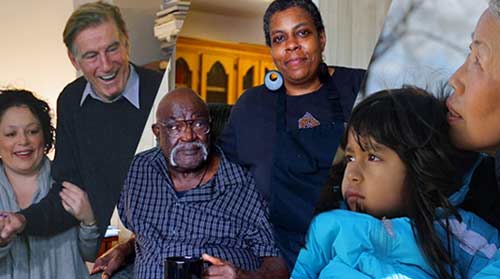Magazine, The Immigrant Experience
Currently, more than 84 million people are forcibly displaced worldwide. Among them, a large number is from Haiti — an island nation in the Caribbean where climate change disasters, and dilapidated political, and economic conditions force people to migrate.
Haitians are escaping violence and political persecution, as well as the drastic damages caused by natural disasters such as earthquakes, hurricanes, desertification, and rising sea levels. In January of 2010, more than 220,000 Haitians had lost their lives and the majority of the infrastructure was destroyed when a 7.0 magnitude earthquake struck the country.
After the earthquake, tens of thousands of Haitians were displaced and headed to Chile, Brazil, and other South American countries in search of safer ground, as they had lost their homes and livelihoods. The majority of them settled in Chile as its immigration system was open and migrants could arrive with no visas.
Haitians and Rising Xenophobia in South America
However, the Chilean President passed a new migration bill in April 2021 after all arriving migrants were required to have obtained a visa before entering Chile. This unreasonable bill came amid the rising xenophobia and anti-immigrant sentiment in Chile.
After the bill, Chile issued only 3,000 visas to Haitians as compared to the 126,000 visas issued in 2018. The COvid-19 pandemic added more to the difficulties faced by Haitians as Chile went through an economic crunch with the majority of Chileans blaming Haitian immigrants for the rising unemployment. Resultantly, Haitians were forced again to displace. This year, more Haitians have left Chile than have arrived.
This time, the Haitians had decided to try their luck in the United States, so they migrated north and were intercepted at the US-Mexico border after leaving Chile and other South American countries. In 2021, nearly 30,000 Haitians reached the US-Mexico border. This number was limited to 5,000 Haitians in 2020.
However, they were not welcomed at the gates of the US. The US authorities held them in Mexico and made them wait there for decisions on their asylum pleas.
Meanwhile, another strong earthquake of 7.2 magnitudes struck Haiti, which, along with political tensions that arose after the assassination of the Haitian president, left Haitian with no other option except to leave the island and try to enter American countries. So, they reached the border city of Del Rio where they were subjected to grave human rights violations at the hands of American immigration and border authorities.
Migrant Influx and Humanitarian Crisis
The worst days of Haitian refugees started when the US started deporting them from Texas to Haiti after rejecting their asylum cases. Among them are those who left Haiti more than a decade ago and have no connections there.
Instead of sending these migrants back to devastated Haiti, the US needs to offer realistic complementary pathways of admission to Haitian migrants. But the US failed to handle the situation and created a major humanitarian crisis.
The Biden administration’s special envoy to Haiti called the expulsion of Haitians “inhumane” to their homeland as it is wracked by civil strife and natural disaster. “I will not be associated with the United States inhumane, counterproductive decision to deport thousands of Haitian refugees and illegal immigrants to Haiti, a country where American officials are confined to secure compounds because of the danger posed by armed gangs to daily life,” he wrote. “Our policy approach to Haiti remains deeply flawed, and my policy recommendations have been ignored and dismissed, when not edited to project a narrative different from my own,” he wrote in his resignation letter.
The Way Forward
The purpose behind pending down the history of the Haitian migration crisis is to deduce that these crises demand in-depth study and deeper understanding for devising a solutions-oriented policy. So, the US needs to understand the underlying problems that force the Haitians to leave their home country.
Rather than opting for an inhumane way of dealing with these crises, the US should consider the human side of this issue. All the problems, including climate change, natural disasters, and political and economic crises are not created by common Haitians, so they should be assisted, not deported back to face the music.
The US immigration system should adapt to admit Haitian refugees. Here are a few recommendations the Biden administration should consider to solve the migration challenges:
- Grant immediate humanitarian parole to Haitians and allow them to process their asylum applications on the US side of the border.
- Provide an alternative pathway to migration by providing higher education opportunities to the Haitians.
- Suspend the deportation of Haitian refugees as did the Obama administration after the earthquake of 2010.
- End Title 42, and ensure equal treatment to immigration and asylum-seeking process for all migrants.
- Invest in devastated Haiti to build it back as the US had done with Europe after it was torn down in the first and second World Wars. This will help create a safe and conducive environment for Haitians at home and they will not attempt migrating to South or North America.











